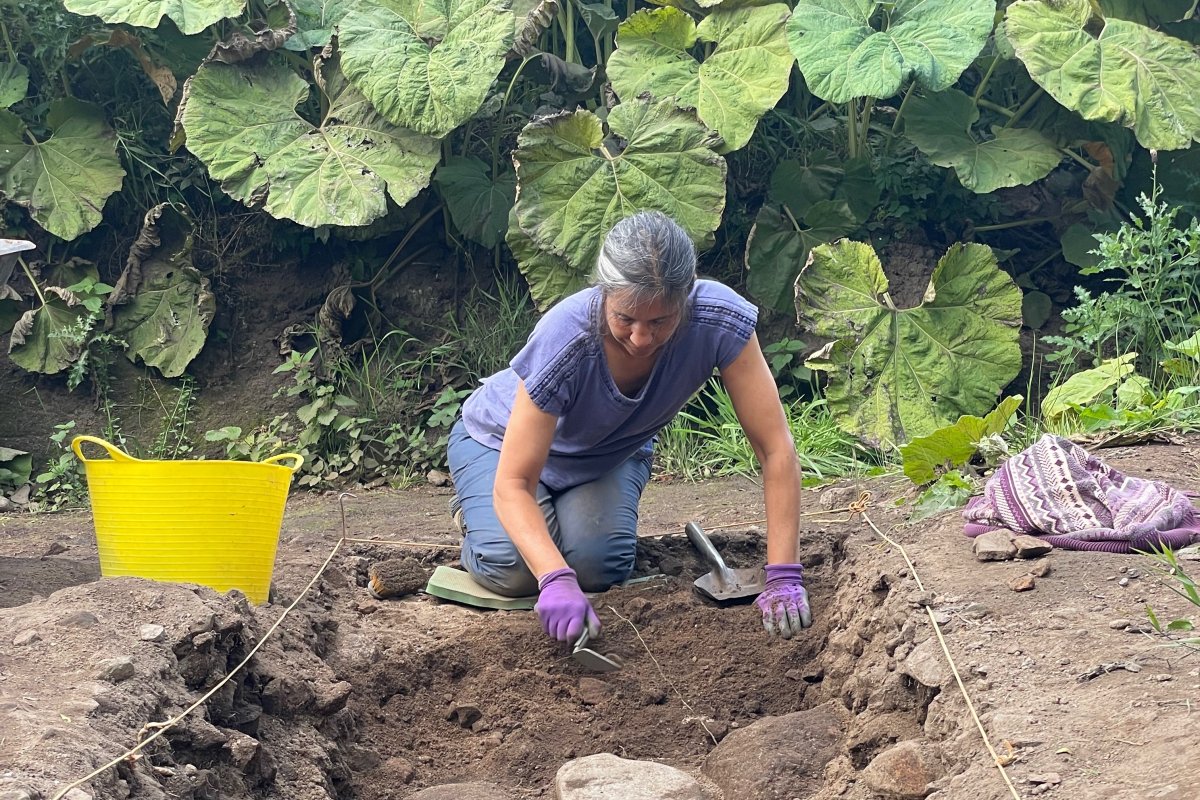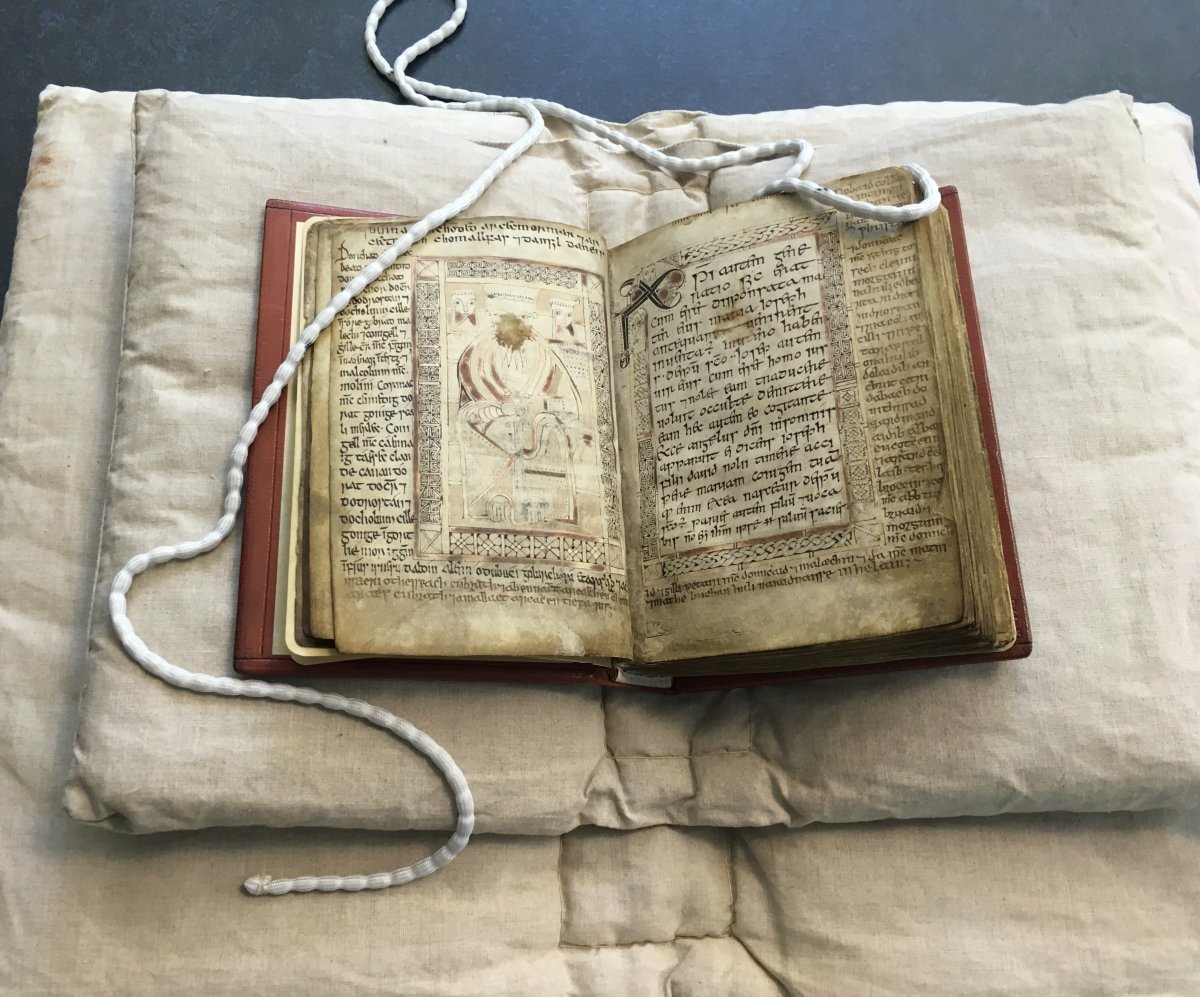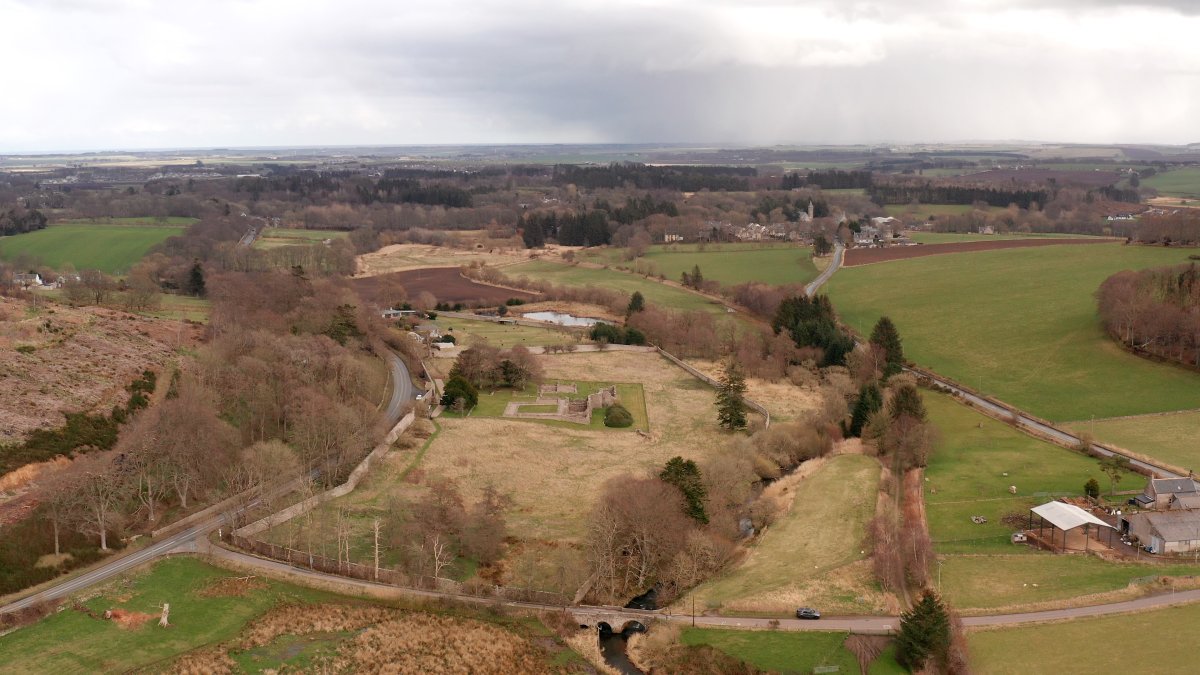Archaeologists have discovered an ancient monastery in Scotland that is thought to have been lost for centuries.
The exact location of the so-called Monastery of Deer has long been one of the biggest mysteries in Scottish archaeology. Now, a team of researchers say they have finally identified the site of the monastery, near the village of Mintlaw in Aberdeenshire, northeastern Scotland.
The team found evidence of the monastery in a field near the remains of Deer Abbey, which was founded in 1219 and disestablished in the 16th century. The exact age of the monastery is not known but it predates the nearby abbey.
"I had never expected us to find the monastery. I am absolutely delighted," Alice Jaspars, a Ph.D. researcher in the University of Southampton's Archaeology Department who co-led the archaeological investigations, told Newsweek.

The monastery is historically significant because the earliest known written record of Scots Gaelic—a language native to the Celtic peoples of Scotland—was produced there in the late 11th or early 12th centuries.
The Gaelic texts come in the form of additions (or addenda) to The Book of Deer—a small illustrated manuscript known as a "pocket gospel book" that was originally written in Latin.
The book, which was produced between A.D. 850 and A.D. 1000—is one of Scotland's most important manuscripts. It is not known where the manuscript was created, but by around the 11th century it had come into the possession of the monks at the Monastery of Deer. Hence the name.
These monks wrote the Gaelic texts, which include land grants, in the margins of the book while it was being kept at the monastery.
"Deer Monastery marks the place where the earliest written surviving Scots Gaelic comes from," Jaspars said. "We don't know who built it per se, nor its entire purpose, but we do know that the addenda to The Book of Deer were written there."
It is also not clear when the monastery was abandoned. To complicate matters, the structure left no trace of its existence other than the land grants written in The Book of Deer.
The manuscript eventually came into the ownership of the Cambridge University Library—located in southern England—in 1715. The circumstances by which the book moved from northeastern Scotland to southern England are unclear.
The addenda in The Book of Deer reference the foundation of the monastery along with other land grants in the northeast of Scotland. It was this evidence that eventually helped lead archaeologists to the site of the long-lost monastery.
"Land grants in The Book of Deer suggest that the monastery was in the local area," Jaspars said.

Excavations conducted in 2022 in a field just over 250 feet from the remains of Deer Abbey revealed post-holes—holes in the ground that indicate the former presence of a structure. This dig focused on the area after a geophysical survey found "interesting anomalies" underground. The archaeologists radiocarbon-dated material associated with the post-holes, finding that it matched the period expected for the monastery.
The team also found several medieval artifacts at the site that indicate the former presence of a monastery complex. These items included pottery, glass fragments, a kind of pointed writing instrument known as a stylus and hnefatafl boards—a chess-like game that was popular until the Middle Ages.
"As home to the earliest surviving Scots Gaelic, The Book of Deer is a vital manuscript in Scottish history," Jaspars said in a press release. "It is our belief that in our 2022 excavation, we found the lost monastery where [the addenda] were written."

The research that took place at the site in 2022 is the latest in a series of excavations that have been conducted since 2009 in an attempt to find evidence of the monastery.
On Thursday, the archaeologists will present their latest findings to the Fellows of the Society of Antiquaries of Scotland, and the results are expected to be published in an academic journal in the coming months. The research is also featured in a documentary about the project produced by the BBC.
Uncommon Knowledge
Newsweek is committed to challenging conventional wisdom and finding connections in the search for common ground.
Newsweek is committed to challenging conventional wisdom and finding connections in the search for common ground.
About the writer
Aristos is a Newsweek science reporter with the London, U.K., bureau. He reports on science and health topics, including; animal, ... Read more
To read how Newsweek uses AI as a newsroom tool, Click here.








